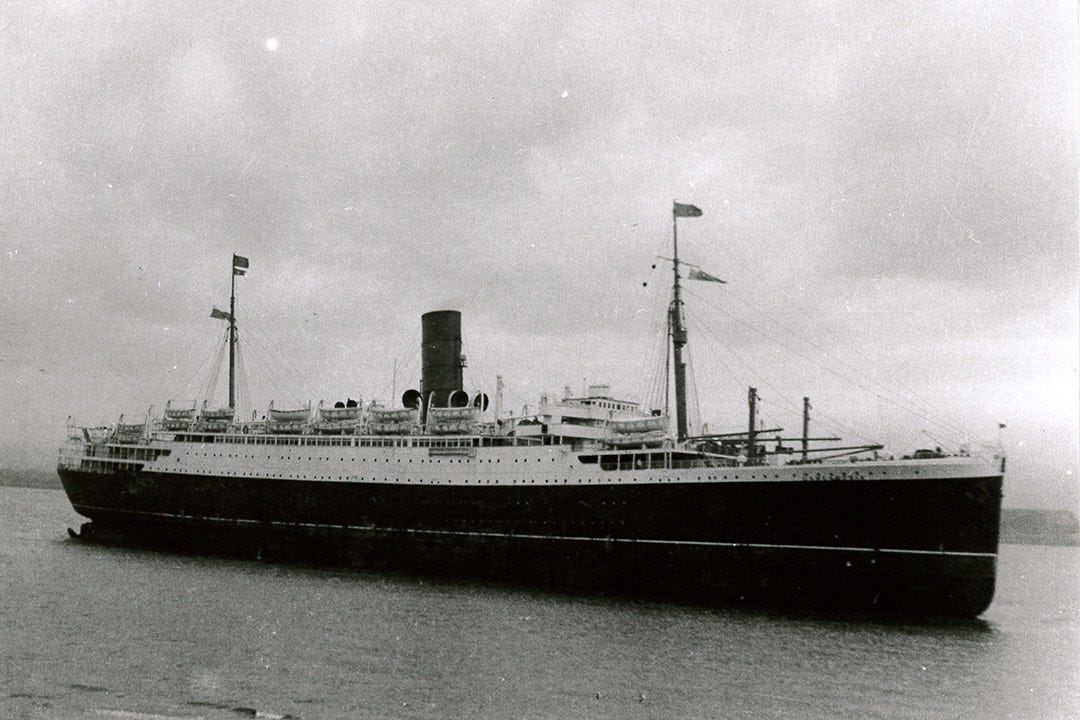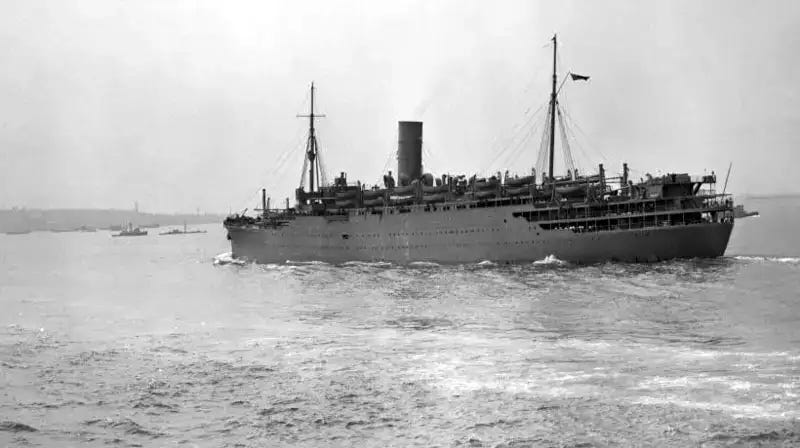Britain's worst Maritime Disaster
17th June 1940: Thousands die as the troopship Lancastria is bombed off St. Nazaire
When the Titanic sank in 1912 there were over 1,500 deaths. When the Lusitania was torpedoed in 1915 there were 1,198 deaths. Both events attracted worldwide attention and horror at the loss of life. When the former Cunard liner the Lancastria, pressed into service as a troop ship, was sunk on 17th June, over 4,000 people died. There was no public attention in Britain for many weeks - because Churchill imposed a news blackout. "The newspapers have got quite enough disaster for today at least".
In mid-June 1940, tens of thousands of British military personnel were still in France even as it became apparent that the new French government was likely to seek an Armistice. Once again, a rapidly organised evacuation was underway—Operation Aerial. The circumstances were not as desperate as at Dunkirk, but they were still impeded by German bombers ranging far and wide.
The Cunard liner Lancastria had been pressed into service as a troop ship. She now took on board as many men as possible, far exceeding her peacetime capacity. Amongst them were over 800 RAF maintenance crew, packed into the lower hold, as well as thousands of soldiers from a variety of Army support units, and an unknown number of civilian refugees.
Thousands of men were brought out by boat from the port of St Nazaire throughout the 17th June - the Lancastria could not directly access the dock because of the tides. The movement of boats and the many ships off St Nazaire attracted the attention of the Luftwaffe, and some ships were bombed and machine-gunned. Just before 4pm, a Ju 88 bomber found the Lancastria.
Keep reading with a 7-day free trial
Subscribe to World War II Today to keep reading this post and get 7 days of free access to the full post archives.




